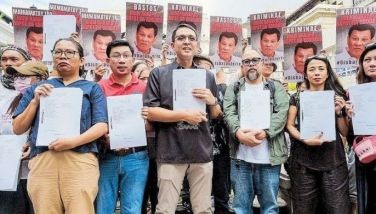The First Five Augustinian Friars in the Philippines
CEBU, Philippines - The Augustinians are said to have pioneered the missionary endeavors in the Philippines.
It was on April 27, 1565, when the Legazpi expedition caught sight of the mountainous islands of Cebu. The expedition brought five Augustinians who would later initiate Christianization, from the colonial hub of Cebu radiating to other parts of the Philippine archipelago.
But who were these friars? How were they chosen for the expedition? An Augustinian literature about the early conquest of the Spaniards in the country entitled, “Conquistas de las Islas Filipinas,” written by Fray Gaspar de San Agustin, OSA, recorded the preparations of the Legazpi expedition. Chapter XIV of Book I explained the selection process for the friars that would accompany the expedition.
Fray Gaspar de San Agustin wrote about the fervor of the friars who wanted to join the expedition to preach the Gospel. The Father Provincial of Mexico had to temper the friars in order to choose “a few without the complaint and holy emulation of so many pretenders” (San Agustin, p. 221). A special meeting was held in the convent of Culhuacan in Mexico, presided by Fray Pedro de Herrera, OSA, to elect the religious to be sent to the mission.
The said meeting formally elected originally six friars for the mission to go with the expedition of Miguel Lopez de Legazpi. They were Fray Andres de Urdaneta, Fray Martin de Rada, Fray Diego de Herrera, Fray Andres de Aguirre, Fray Lorenzo Jimenez (or San Esteban) and Fray Pedro de Gamboa.
Fray Andres de Urdaneta was born in 1498 in Villafranca de Guipuzcoa, Spain. He professed his vows in the Augustinian convent in Mexico on May 20, 1553.
Fray Andres de Urdaneta was actually part of the Loaisa expedition before entering the Augustinian Order in 1552. He left his hometown at the age of 17 and joined the Loaisa expedition. His experiences as a mariner earned him the distinction of being an experienced navigator. This led the Viceroy of Mexico, Don Luis de Valasco, to suggest the name of Urdaneta as a guide for the exploration during the reign of King Philip II to explore the Isles of the West, especially the archipelago named after him.
Fray Urdaneta and his friar-companions arrived in Cebu in April 1565 but he was sent back by Miguel Lopez de Lagazpi in June 1 of the same year. This led to the discovery of the “tornaviaje” or the “return route” from the Philippines to Mexico. This naval thoroughfare would be the connection of the trading relationship of the Philippines to Mexico through its Manila-Acapulco Galleon Trade. By Fray Urdaneta’s genius and experience, he carved this nautical highway which would serve the Spanish crown’s economic trade until 1815. Fray Urdaneta had not returned to the country since he last left. He died in June 3, 1568 at the age of 70 in Mexico.
Fray Martin de Rada was born in Pamplona, in the province of Navarra on June 30, 1533. Fray Rada studied shortly in Paris at the age of 12 but was forced to return to Spain and studied at the University of Salamanca. In Salamanca, he joined the Augustinian Order and professed on November 21, 1554.
Based originally in the monastery of Toledo, Spain, Fray Rada volunteered to be assigned in Mexico in 1560. He was eventually elected to join the Legazpi expedition with Fray Urdaneta in 1564. Arriving in Cebu in 1565, Rada and the other two friars stayed in the country while Fray Urdaneta returned to Mexico with Fray Andres de Aguirre.
Rada was very instrumental in the Christianization of the natives. He quickly learned Cebuano and preached to the natives. He also stood as a defender of the rights of the natives against abusing Spaniards in the newly-occupied territory. Rada was also instrumental in discovering the island of Panay in 1566 as they searched for food. Eventually, he also preached the Gospel in the said island, particularly in the riverbanks of Jalaud (now Dumangas, Iloilo) and Panay (in province of Capiz).
Fray Rada became the superior of the Augustinians in the Philippines by 1572 and its first Prior Provincial when the new Province of Santissimo Nombre de Jesus de Filipinas was established in 1575 with its governing hub at the Monastery of San Pablo, now the San Agustin Church and Monastery, in Intramuros, Manila.
In the incumbency of his leadership, Fray Rada encouraged studies and created as a central hub San Agustin Monastery in Intramuros, Manila for Augustinian studies and missionary cooperation. Eyeing also for missionary expansion to China, Fray Rada with Fray Jeronimo Marin, OSA went to China in June 26, 1575. They were considered the first emissaries of the Spanish Crown to China. But because of later indifference shown by Francisco de Sande, the Governor General at that time, the diplomatic relations between the Spanish Crown and China did not flourish. Rada, however, accompanied Sande to Borneo in 1578 but the friar died on board early June of the same year while the expedition was returning to Manila.-/QSB
(To be continued…)
- Latest


























